
Review on Shure SRH440 Professional Studio Headphones by Tim Hollinger

Looking for full size sealed jars? This Shure sounds the most accurate and neutral for less than $100.
I recently needed over-the-ear headphones on a budget of $100 and was curious to see what the market had to offer. I thought I could share my findings with someone who is in a similar situation. The Shure SRH440 proved to be the most accurate, neutral-sounding, closed-back design of the eight headphone models I compared. Below is my review of these headphones. I assemble speakers with meters so I know what a neutral and undistorted sound is. Unlike speakers, most headphones don't have a crossover or frequency response correction. Therefore, it is very important to know how such uneven responses affect the perception of their sound in terms of accuracy and neutrality. I have a good feeling for it since I measured the sound. But I don't have the right equipment for headphone measurements, especially a torso/head dummy, and I don't want to waste time building a homemade rig. For this reason, my search and listening experience has been limited to headphones for which measurement data are available, with a few exceptions (see below). I used three different sources to get the data: InnerFidelity.com, Headphone.com and en.GoldenEars.net. Despite the consistency of the measurements at each site, there is also a discrepancy between them due to different measurement conditions and compensation methods. So I researched and took them into account. It can be said that we can use an equalizer to correct irregular frequency response. But the equalizer has its limits. A little EQ can help, but headphones that require too much equalization should be avoided. The main reason is the loss of dynamic range. In theory, using an equalizer can only limit, not increase, the dynamic range in a given frequency band. On the source side you lose digital bit depth and on the headphone side you suppress the driver's effective response range. Below is a list of headphones I tried (in order of street price): Tascam TH-02. ($30; data not available) - Panasonic RP-HTF600-S ($32; semi-open headphones) - Brainwavz HM3/Incipio F38 ($35; data not available) - Tascam TH-2000 ($50; data not available) - AKG K518LE ($50) - Sennheiser HD 429 ($65) - Creative Aurvana Live! ($70) - KRK KNS 6400 ($85) - Shure SRH440 ($90) My DIY speaker system (it's very flat) served as a benchmark for tonal balance. I also have several open-back headphones, such as the Sony MDR-MA900 and Sennheiser PX100, which also served as a starting point for evaluating the tonal balance of the headphones being compared. I used a desktop headphone amp, which has a flat frequency response and fairly low output impedance. I will give brief, generalized impressions for each pair. Tascam TH-02 (measurement data not available). This is really a pleasant surprise. There's a slight bulge in the bass and mid-bass range, as well as a wide, shallow dip in the upper-mids and lower trebles (i.e. a bit polite delivery). Otherwise these are relatively accurate headphones for the price ($30) compared to headphones of comparable quality. The construction is good for the price. The size of the ear pads is between overhead and overhead, but comfortable enough. Panasonic RP-HTF600-S (semi-open headphones) Warm tone, deep bass. There are high frequencies but no upper mids and lower frequencies. Comfortable to wear. Good price but not the best for those looking for a fairly accurate sound. Brainwavz HM3 / Incipio F38 (data not available) Mid/high bass spoils an otherwise well-balanced mid/treble. Very uncomfortable to wear due to non-rotatable cups. Tascam TH-2000 (data not available) Just inferior to the younger brother TH02. Very boring and vague presentation. The model uses the same ear pads as the TH02, but uses different speakers. A driver can have better components, but the execution must be poor. Not worth the asking price. AKG K518LE You need to remove the thick foam pad on the front panel of the driver (easily removable) to improve the balance between bass and midrange. Even with the overlay removed, the audio in the phones is still bassy, but not bad. The balance between mid and high frequencies is good. Slightly similar sound signature to the Tascam TH-02. But the TH-02 sounds a little more natural. The headband may be too small for some people. The clamping force is slightly above the comfort level. Sennheiser HD 429 Another bass-focused headphone. But not too bassy. But the big problem is the high frequencies, which are too polite to be neutral. I wouldn't call these headphones good value for money. Creative Aurvana Live! Soft and warm tone. The bass is sometimes a bit loose. High frequencies sparkle and sound soft at the same time. But compared to the bass and treble, the upper mids and lower treble are set back a bit, which adds color to the sound in the headphones. They may seem musical and full to some, but I prefer the Tascam TH02 at a lower price point. However, the optics are very good with a certain claim to high quality. Very comfortable to wear with memory foam pads. KRK KNS 6400 have a much more neutral sound than the headphones described above. The mids and highs are a bit lacking, and the highs are a little overdone. Good monitor sound. But there is a problem with these headphones. They're not very efficient, which means their usability is limited - you'll need a desktop headphone amp or a portable, high-current amp to make them sound good. Highs that are a little too bright are also a weak point. Shure SRH440 Without a doubt they are the best of them all. The perceived dynamic range is incredibly wide. They are also in a different league when it comes to clarity - the KNS 6400 may be close, but it also has weaknesses (see above). The highs are sometimes a bit brighter, but not as bright as the KNS6400. For some, they might appear bright in bright recordings, but don't blame the headphones for that. They produce a very neutral and precise sound. Bass is plentiful and often pleasingly strong in the mids and highs, but the deeper bass doesn't get overwhelmed by these benches. In any case, most music recordings do not contain this deep bass. I summarize my findings with the following two top recommendations: 1. Shure SRH440: These are the headphones to buy for under $100 if you want accurate, neutral sound. Tascam TH-02: This is an insider tip. For $30 you get some really nice closed cans. Its overall presentation isn't as clear as the SRH440, but given the price, there's nothing to complain about. They're definitely in the same league as the AKG K518LE (without foam pads) and the Creative Aurvana Live. It may come down to personal preference, but out of the three, my pick is Tascam. Creative looks better but I would choose Tascam for its sound. Another headphone model I wanted to include in my search was the Sennheiser HD 280 Pro ($90-$100), but after listening to the Shure SRH440. I decided against it. Based on HeadRoom measurements and the general impression of many people, the HD 280 Pro has slightly muted highs compared to the SRH440, which has a great balance of mids and highs compared to my reference speakers. The Sennheiser covers the lower octave much better than the Shure, but that's not my priority. I also considered the Koss ProDJ100 based on the good reviews but ruled it out due to its size. Their response can be flat in the fundamentals of most instruments, but not in the overtones due to the large dip around 5-6kHz. Some people might think they sound good, but by my standards they can't sound accurate and natural.
- Very Good Price
- No Form Required
New products
Comments (0)
Top products in 🎧 Over-Ear Headphones
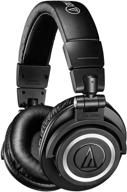
Black Audio-Technica ATH-M50xBT Headphones, Size Medium (ATHM50XBT) for Improved SEO

92 Review
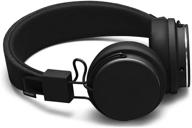
Black Urbanears Plattan 2 On-Ear Headphone (04091668) for Enhanced SEO

103 Review
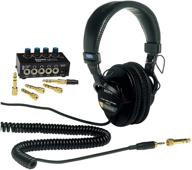
Bundle: Sony MDR7506 Closed Ear Headphones with Knox Gear Compact 4-Channel Stereo Headphone Amplifier - Professional, Folding Design (2 Items)

110 Review
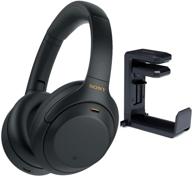
Enhance Your Audio Experience with Sony WH-1000XM4 Wireless Headphones and Knox Gear Mount Bundle

196 Review
Another interesting products
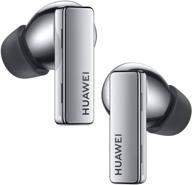
Huawei Freebuds Pro MermaidTWS with Active Noise Cancellation - Silver Frost

299 Review
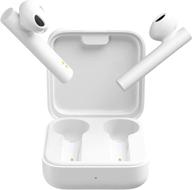
Upgrade Your Music Experience with XiaoMi True Wireless Earphones 2 Basic - Longer Battery Life and Superior Sound Quality (White, International Edition)

341 Review
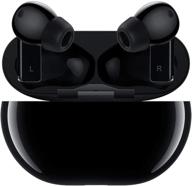
🎧 Huawei FreeBuds Pro Earbuds with Advanced Noise Cancellation, Bluetooth 5.2, and 3-Mic System for iOS and Android (Carbon Black)

295 Review
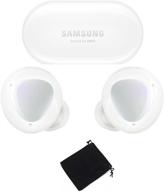
Upgrade Your Audio Experience with Samsung Galaxy Buds+ Plus: True Wireless Earbuds with Improved Battery and Call Quality in White, including Wireless Charging Case and Velvet Pouch.

320 Review

